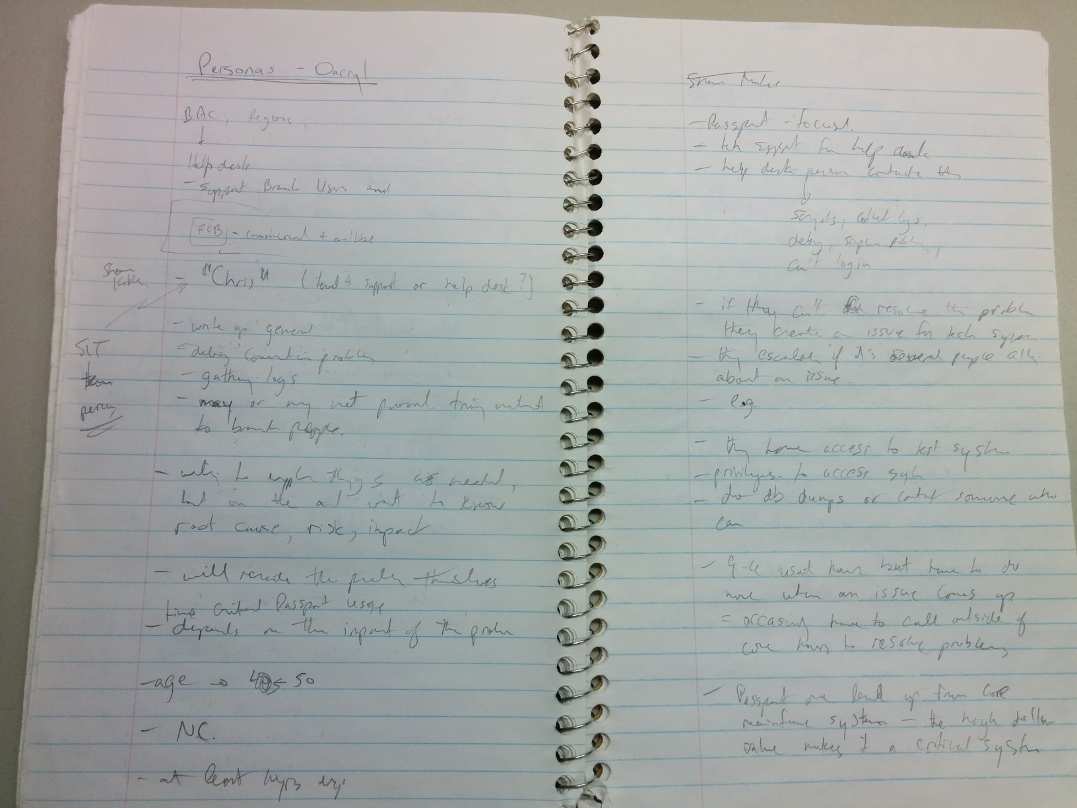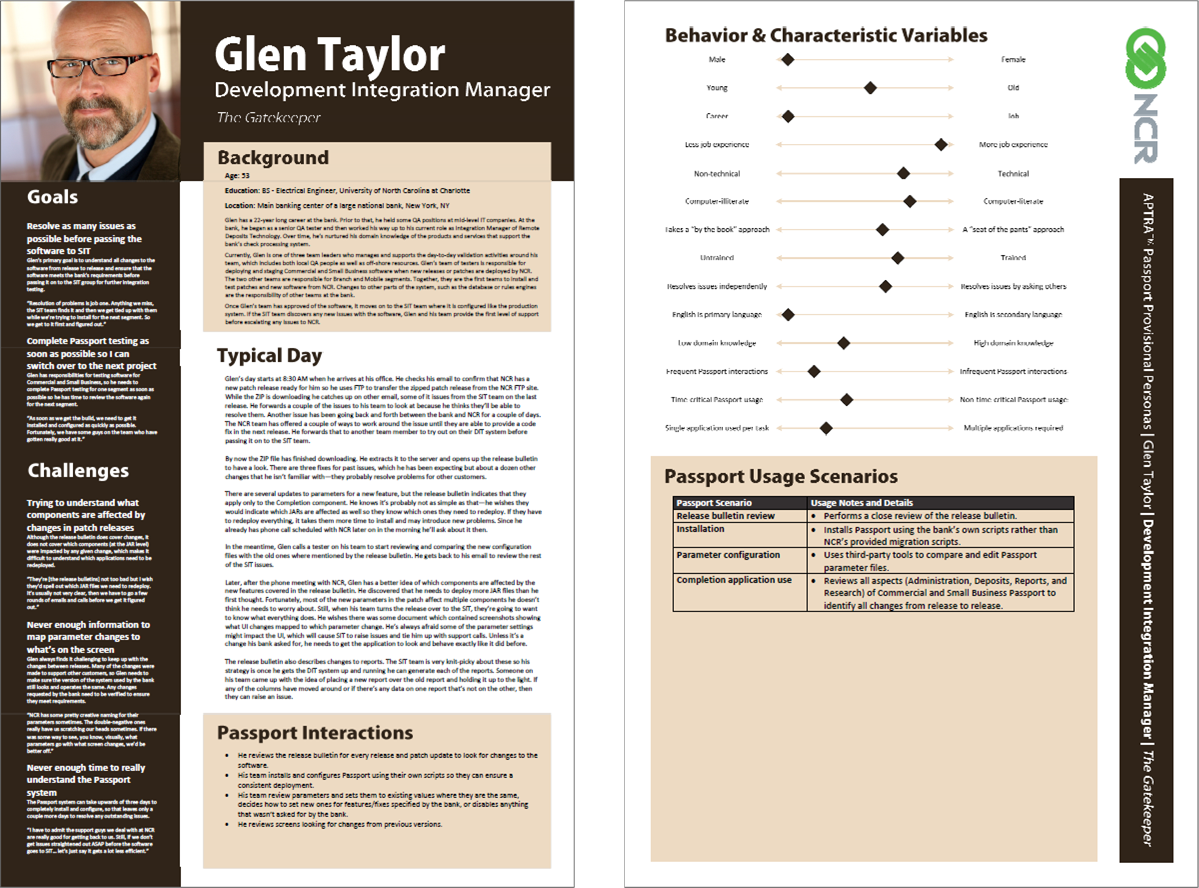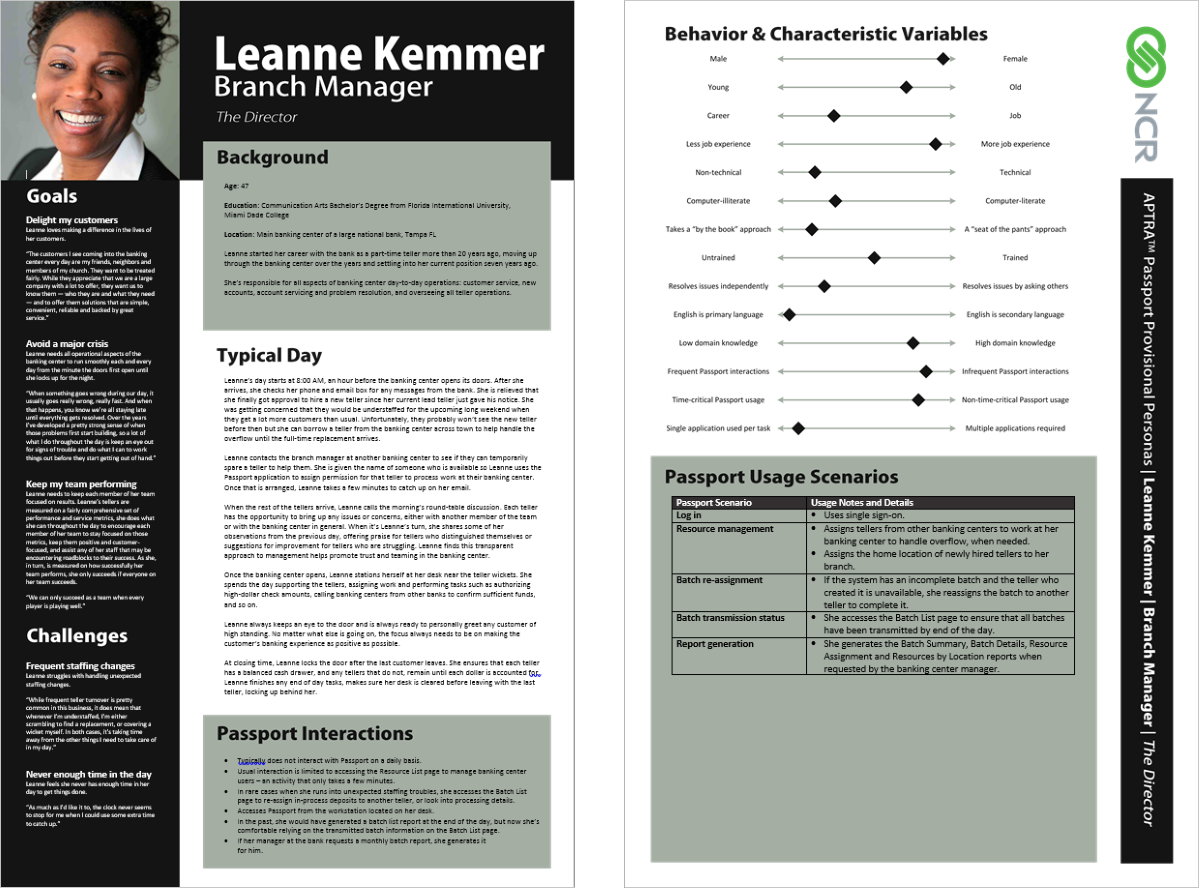Researching our Users
After some staff turn-over, we decided to help newer team members better understand the audience they were developing and testing by assembling personas representing user archetypes of the different product lines. I worked with a member of the Information Products group to research and produce personas which we could use to communicate user characteristics to the team. Due to time and budget concerns we decided to go ahead with provisional personas, gathering information from customer-facing team members who could provide input. We also incorporated information from training videos from one of our major customers to supplement the other information we gathered.
To develop our personas, we proceeded as follows:
- Prioritized the product lines which were most prominent and for which we could obtain the most information.
- Enumerated user types according to role (e.g., operators, supervisors, administrators) for the prioritized product lines.
- Developed a standardized list of questions to ask our participants.
- Developed template for persona assets.
- Researched and developed a behaviour/characteristics matrix for understanding the range of user attributes of a given user type.
- Recruited, scheduled, and interviewed customer-facing team members to interview.
- Reviewed and analyzed information chunks from recorded notes.
- Wrote up information sheets for each persona.
Research took the following forms:
- Visiting customer users at their site.
- Interviewing customer-facing members of the team.
- Reviewing training videos
Customer Visit
We had the opportunity to visit a bank branch for one of our customers. This site was one of the pilot bank branches running the bank version of our software/hardware solutions. The goal of the visit was to see first-hand how the branch tellers were interacting with our solution during a typical business day.
For this activity, I traveled solo to Raleigh, N.C. to meet with two of the bank's Operation staff. I received some background on the branch and a short history of the pilot program. Due to security concerns, I was to focus on back-office operations rather than front-desk, and limit interruptions to the tellers as they were focused on customer care. Also, since the visit was scheduled for a single afternoon, I limited the scope to include:
- observe branch tellers interacting with our application
- ask tellers questions while they are using the application
- hold a debriefing conversation with the bank Operations staff
Over the course of the afternoon, I waited in the backroom where our software/hardware was location. At various points over a couple of hours the head teller left his station at the wicket and brought documents needing to be scanned into our system. I watched as he interacted with the system, noting the tasks he performed and any problems he had while performing them.
Highlights from the session included:
- the customer was pleased with the recent hardware update over the old equipment
- an observation for an area of improvement on the scanning failure and recovery process
- insight on an opportunity for a new product
- a better understanding on how tellers use this specific product to inform design on upcoming projects
At the conclusion of the visit, I took my notes and copies of their instructional material and a troubleshooting guide.
After returning from the customer visit, I shared the information I gathered on our CMS and wrote up a report detailing the environment, process, and issues which went to the customer.
Interviewing Customer-Facing Members of the Team
To add breadth of coverage of our users, we decided to interview members of our team who interact frequently with different user roles across our customers. Our development and support teams have been working with customers for a long time and we had attained a lot of good information about our users. Unfortunately, this information was spread internally across pockets of people in different teams. By interviewing a cross-section of them, we wanted to bring all this information into a centralized place.
Two groups with a lot of customer and user interaction are support and professional services teams. The support team handles customer-raised issues and has close interactions with actual customer users. Meanwhile, our professional services group helps customers install, configure, and trouble-shoot their systems. By talking to our colleagues on these teams, we developed a better understanding of our administration-type users. Some individuals were also heavily involved in the customer operations and gave insights into those users as well.

Reviewing Customer Training Videos
During our research, we discovered user training videos which provided low-level explanations of user tasks and interactions with our software. This turned out to be a gold-mine of information as we incorporated those day-to-day operational tasks into our operator user information.

Creating Personas
After incorporating the information collected from research in the persona template, we produced several personas across three product lines. In addition to placing them in the team area, we discussed them with our team members and as a result were able to transfer a lot of knowledge about users that would not otherwise be available to them.







